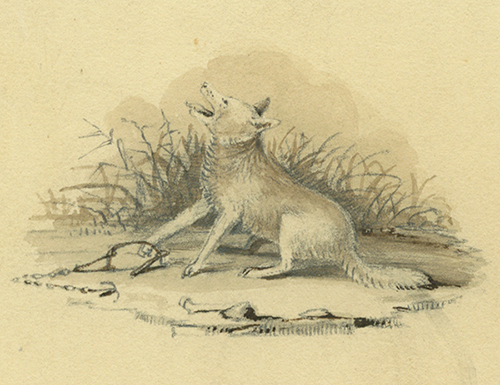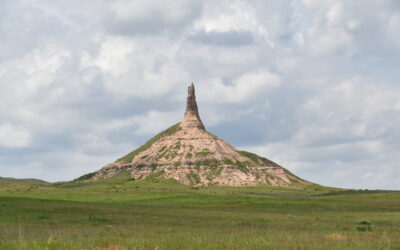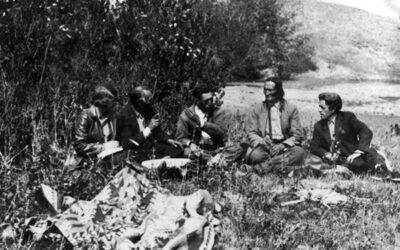
How and why did this coyote end up in this cruel trap?
The coyote was long known to Nebraska’s Native peoples. They understood its intelligence. It’s no accident that Coyote often appears as a trickster figure in their stories. But the species was barely known to science until an 1819-20 expedition studied it in Nebraska.
We’ve been telling you about the Stephen Long Expedition and its re-discovered winter campsite at Engineer Cantonment north of Omaha. The “discovery” of the coyote is part of the larger story of the expedition’s groundbreaking scientific work. Although the expedition didn’t use the modern term “biodiversity inventory,” that’s exactly what they were doing. More about that below.
How did the coyote end up in the trap? Two expedition members, Thomas Say and Titian Ramsay Peale (the artist who made the above sketch), went to great lengths to trap what they called a “prairie wolf.” They tried a baited box held up by a stick, but the coyote burrowed underneath to steal the bait. They tried a wooden cage without success. They tried steel traps. They even built a “log fall trap” in which a log was propped up and set to fall if a “trigger stick” was disturbed. After numerous failures they finally got their coyote.
But why? Hugh Genoways and Brett Ratcliffe write in Nebraska History:
“This is the first place in America of which we are aware that a party of scientists attempted to produce a complete inventory of the mammals, birds, amphibians, reptiles, insects, snails, and plants occurring in a limited geographic area….”
For nine months, the team of scientists gathered specimens, made sketches and paintings of animals, and interviewed local Indians about their knowledge. The US government paid for this fact-finding expedition because of political, military, and economic concerns that had little to do with pure science. But once in the field, the scientists were free to pursue their curiosity.
Today’s scientists would consider the use of this type of trap unethical. But in the 19th century the study of wild animals involved a lot of trapping, shooting, and mounting of specimens with no effort to minimize the suffering involved. This is one way in which their view of the world was different from ours.
Another difference is that around the former base camp, habitats are “vastly different from the broad floodplain of almost 200 years ago.” Humans have literally changed the local environment almost beyond recognition—draining the valley’s swamps, building cities and farms and highways, changing the balance of plants and animals, re-engineering the course of the river itself, even changing the climate. The work of Long’s men provides a snapshot in time of the area’s biodiversity before these changes took place. Genoways and Ratcliffe explain why this matters:
“Biodiversity is important to humankind practically, aesthetically, and ethically, because our very existence depends on our direct use of, and care for, the plants, animals, and ecosystem functions that comprise biodiversity. The presence of many different kinds of species is important because many species provide food, shelter, clothing, medicine, and enhanced spirituality to humans… Current extinction rates are 50 to 500 times background rates and increasing… We are now living in what will eventually be recognized as a mass extinction event.”
The Long Expedition not only provides a local baseline for comparison, but also stands out as the first such systematic inventory in US history.
Read more in “Science and Engineer Cantonment” in the Spring 2018 issue of Nebraska History.
—David Bristow, Editor
Image credit: American Philosophical Society, Philadelphia (APSimg2051)



